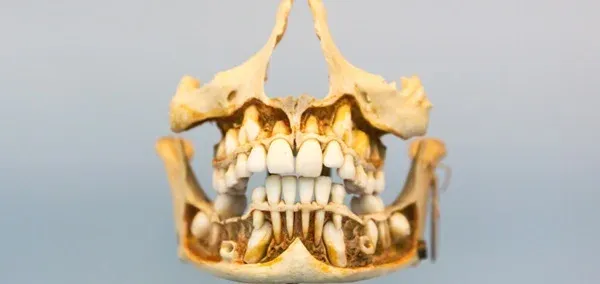Exploring the Need for Surgical Orthodontics
Dr. Hoss Abar
When Traditional Methods Aren't Enough
Orthodontics dentistry focuses on the alignment of teeth and jaws. While traditional methods like braces and aligners are often sufficient for most cases, some individuals may require a more complex treatment plan. In these cases, surgical orthodontics can be a viable solution. This method combines orthodontic treatment with jaw surgery to correct severe bite problems that traditional methods can't fix alone. In this article, we'll explore the need for surgical orthodontics and when it may be necessary to achieve the best possible outcome for a patient's oral health.
Understanding Traditional Orthodontic Methods
Orthodontic methods like braces and aligners are commonly used to fix dental misalignments and bite irregularities. Understanding these methods and their limitations is crucial for dental care.
Braces are a traditional orthodontic treatment that gradually aligns teeth with metal brackets, wires, and elastic bands. They come in different types, such as metal, ceramic, and lingual braces. Conversely, Invisalign is a removable aligner system that offers greater convenience, comfort, and aesthetics than braces. It consists of clear, custom-made aligners that guide teeth into the desired positions.
Traditional orthodontic methods have limitations for complex cases involving facial imbalances. In such cases, surgical orthodontics becomes necessary for optimal results. Patients should understand these limitations to make informed decisions about their treatment options and collaborate with their orthodontists for personalized treatment plans.
Limitations of Traditional Orthodontic Treatments
While traditional orthodontic treatments such as braces and aligners are highly effective for addressing many common dental issues, they have limitations that may necessitate alternative approaches for achieving desired outcomes. Understanding these limitations is crucial for patients and orthodontic professionals when considering treatment options and determining the most appropriate action.
- Skeletal Discrepancies: Traditional orthodontic methods focus on moving teeth within the bone structure. However, they cannot correct significant skeletal discrepancies, such as underbites, overbites, or crossbites, where the jawbones are misaligned. In such cases, surgical orthodontics may be required to reposition the jawbones and achieve proper alignment.
- Facial Asymmetry: Traditional orthodontic treatments may not adequately address facial asymmetry resulting from skeletal discrepancies or developmental abnormalities. While braces and aligners can align teeth, they may only partially correct imbalances in facial proportions. Surgical orthodontics, which combines orthodontic treatment with corrective jaw surgery, may be necessary to achieve harmony in facial aesthetics and function.

- Limited Treatment Scope: Traditional orthodontic methods emphasize dental alignment and bite correction. They may not be suitable for addressing complex cases involving multiple dental and skeletal issues, such as severe crowding, spacing, and jaw irregularities. Surgical orthodontics offers a comprehensive approach to concurrently addressing dental and skeletal problems.
- Treatment Duration: Traditional orthodontic treatments can significantly improve dental alignment over time, but they may require an extended treatment duration, especially for complex cases. Patients may need to wear braces or aligners for several months to several years to achieve desired results. Surgical orthodontics may offer a more expedited solution for some instances, reducing overall treatment time.
- Relapse Risk: In some cases, there is a risk of relapse following completion of traditional orthodontic treatment, particularly if retention protocols are not followed diligently. Without proper retention, teeth may gradually return to their original positions, compromising treatment outcomes. Surgical orthodontics can help address underlying skeletal issues, reducing the risk of relapse and enhancing long-term stability.
What is Surgical Orthodontics?
Surgical orthodontics is a specialized branch of dentistry that uses orthodontic treatment with corrective jaw surgery to address severe malocclusions, skeletal discrepancies, and facial imbalances. It aims to correct functional and aesthetic issues related to the alignment of the jaws and teeth. This comprehensive approach allows for correcting complex cases that cannot be adequately resolved with traditional orthodontic treatments alone.
Surgical orthodontics is performed for severe dental and skeletal abnormalities such as underbites, overbites, crossbites, open bites, facial asymmetry, and congenital jaw deformities. The process involves a comprehensive evaluation by a multidisciplinary team of orthodontists, oral and maxillofacial surgeons, and other dental specialists to determine the most appropriate treatment.
Surgical orthodontics offers a comprehensive solution for correcting severe dental and skeletal discrepancies, enhancing the smile's functional and aesthetic aspects. By addressing underlying structural issues, surgical orthodontics can significantly improve bite function, facial harmony, and overall quality of life for patients with complex orthodontic needs.
Conditions Requiring Surgical Orthodontics
Understanding the specific conditions that may necessitate surgical orthodontics is essential for identifying candidates who may benefit from this specialized approach. Some of the common conditions requiring surgical orthodontics include:
- Severe Underbite (Class III Malocclusion): An underbite occurs when the lower jaw protrudes forward, causing the lower teeth to overlap the upper teeth. In cases of severe underbite, traditional orthodontic methods may not be sufficient to address the underlying skeletal discrepancy. Orthognathic surgery may be necessary to reposition the lower jaw and properly align the teeth and jaws.
- Severe Overbite (Class II Malocclusion): An overbite occurs when the upper front teeth excessively overlap the lower front teeth. In severe overbite cases, orthognathic surgery may be required to reposition the upper jaw and reduce the prominence of the upper teeth. This helps to achieve a balanced occlusion and improve facial aesthetics.
- Crossbite: A crossbite occurs when one or more upper teeth are positioned inside the lower teeth when biting down. If left untreated, crossbites can lead to asymmetrical jaw growth and improper tooth wear. Surgical orthodontics may be necessary to correct skeletal discrepancies and properly align the upper and lower jaws.
- Open Bite: An open bite occurs when there is no vertical overlap between the upper and lower front teeth when the back teeth are in contact. This condition can result from skeletal abnormalities or prolonged habits such as thumb sucking. Surgical orthodontics may be recommended to address underlying skeletal issues and close the open bite for improved function and aesthetics.
- Facial Asymmetry: Facial asymmetry refers to unevenness or imbalance in the proportions of the facial structures, including the jaws and chin. It can result from developmental abnormalities, trauma, or genetic factors. Surgical orthodontics, including orthognathic surgery and chin repositioning procedures, can help correct facial asymmetry and restore facial harmony.
- Congenital Deformities: Some individuals are born with congenital deformities of the jaws or facial skeleton, such as cleft lip and palate or craniofacial syndromes. Surgical orthodontics is crucial in correcting these complex craniofacial anomalies and improving function and aesthetics.
Benefits of Surgical Orthodontics
- Improved Facial Aesthetics: Surgical orthodontics can enhance facial symmetry and harmony by correcting skeletal discrepancies and repositioning the jaws into proper alignment. This can lead to a more balanced facial profile and a more pleasing overall appearance.
- Enhanced Bite Function: By addressing underlying skeletal issues, surgical orthodontics improves occlusal relationships and bite function. This can alleviate problems such as difficulty chewing, speech impairments, and temporomandibular joint (TMJ) disorders, improving oral function and comfort.
- Correction of Dental and Skeletal Abnormalities: Surgical orthodontics can effectively correct severe malocclusions, including underbites, overbites, crossbites, and open bites, that cannot be adequately resolved with traditional orthodontic treatments alone. By addressing dental and skeletal abnormalities, surgical orthodontics comprehensively correct complex orthodontic issues.
- Long-Term Stability: Orthognathic surgery provides durable and long-lasting results by addressing the underlying structural issues contributing to dental and skeletal discrepancies. By stabilizing the jaws in their corrected positions, surgical orthodontics reduces the risk of relapse and maintains the integrity of the occlusion over time.
- Improved Oral Health: Proper alignment of the teeth and jaws achieved through surgical orthodontics promotes better oral hygiene and reduces the risk of dental issues such as decay, gum disease, and tooth wear. It also facilitates easier maintenance of oral hygiene practices, leading to improved oral health.
- Enhanced Self-Confidence and Quality of Life: Surgical orthodontics can improve a person's self-esteem and quality of life by improving facial aesthetics, bite function, and oral health. With a more balanced smile and improved oral function, individuals often experience increased confidence and satisfaction with their appearance and daily activities.

- Customized Treatment Plans: Surgical orthodontics involves a multidisciplinary approach, with orthodontists, oral and maxillofacial surgeons, and other dental specialists collaborating to develop personalized treatment plans tailored to each patient's unique needs and goals. This ensures that treatment is comprehensive, effective, and aligned with the patient's preferences and expectations.
Contact your Pinole dentist, Dr. Hoss Abar, DDS, MSD at Abar Orthodontics, to learn more about Exploring the Need for Surgical Orthodontics.
Resource:
How adults can benefit from modern orthodontics?
*This media/content or any other on this website does not prescribe, recommend, or prevent any treatment or procedure. Therefore, we highly suggest that you get the advice of a qualified dentist or other medical practitioners regarding your specific dental condition.
More To Explore
About Us
We believe that every patient deserves to feel confident about their smile. Years of experience creating beautiful and flawless smiles.
Opening Hours:
Monday - Thursday: 8:00 AM - 5:00 PM
Friday: 8:00 AM - 12:00 PM
Saturday - Sunday: Closed
Abar Orthodontics, Pinole, CA
1500 Tara Hills Drive., Suite 204
Pinole, CA 94564
Abar Orthodontics, San Leandro, CA
145 East 14th street., #100
San Leandro, CA 94577
© 2026Abar Orthodontics | All rights reserved | Powered by:Vigorant, Inc.
